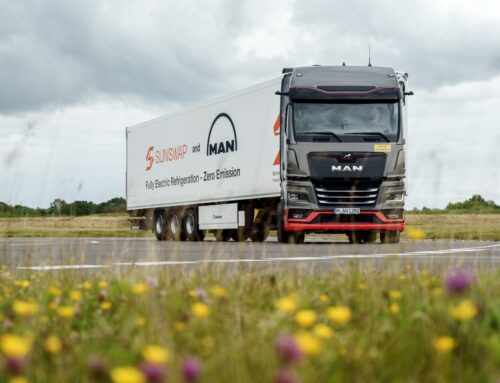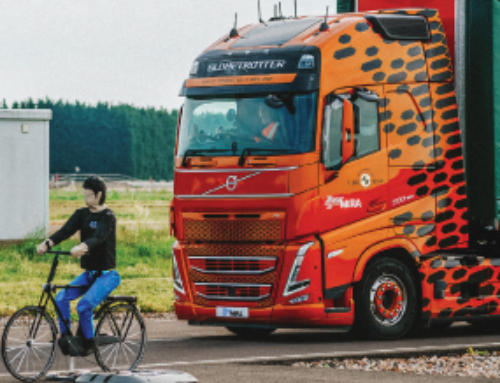CV Show launch for bolt-on hybrid power kit
 A bolt-on kit to convert rigid distribution trucks to hybrid power was launched at the Commercial Vehicle Show by British company AEM (Advanced Electric Machines).
A bolt-on kit to convert rigid distribution trucks to hybrid power was launched at the Commercial Vehicle Show by British company AEM (Advanced Electric Machines).
It recovers kinetic energy that would otherwise be lost to braking, stores it in a capacitor and then returns it to the drive-line as the truck accelerates again.
An ‘electric machine’ (aka motor generator) is fitted to the truck’s prop-shaft, and is capable of producing up to 147 kW (200 hp equivalent) in driving mode using energy from the capacitor pack, which is bolted to a chassis rail.
AEM maintains that its technology has certain key advantages.
Firstly, there are no permanent magnets in the motor, which means there is little parasitic drag when the system is not in use, and there is no requirement to use scarce, expensive, and environmentally-damaging rare earth metals in its construction. Instead, it’s a reluctance motor, and effectively freewheels until it is energised.
While it is activated by the driver applying accelerator or brake, it remains separate from the engine and braking systems other than via its integral ECU using the standard FMS interface. It’s effectively fail-safe, as there are no magnets to become demagnetised. The ultra-capacitors can take a million charge-discharge cycles before degradation, where conventional EV batteries decline after a few thousand cycles.
On a typical 18-tonne vehicle covering 45,000 miles pa on urban distribution a 28 per cent reduction in fuel consumption and hence CO2 output can be achieved, AEM claims, giving a payback in just over three years.
The system weighs 300 kg, but some of this extra weight could potentially be saved by taking advantage of the increased range to put less fuel in the vehicle at the start of shift.
It can also take the place of a conventional hydraulic retarder or engine brake.
A further economic and environmental bonus is reduced friction brake wear: particles from friction brakes have increasingly been highlighted as an environmental hazard.
The system has been trialled on an 18-tonne Iveco, but would work on any rigid truck with a gross weight of 12 tonnes and up, and could be scaled up to suit multi-axle trucks of up to 32 tonnes.










